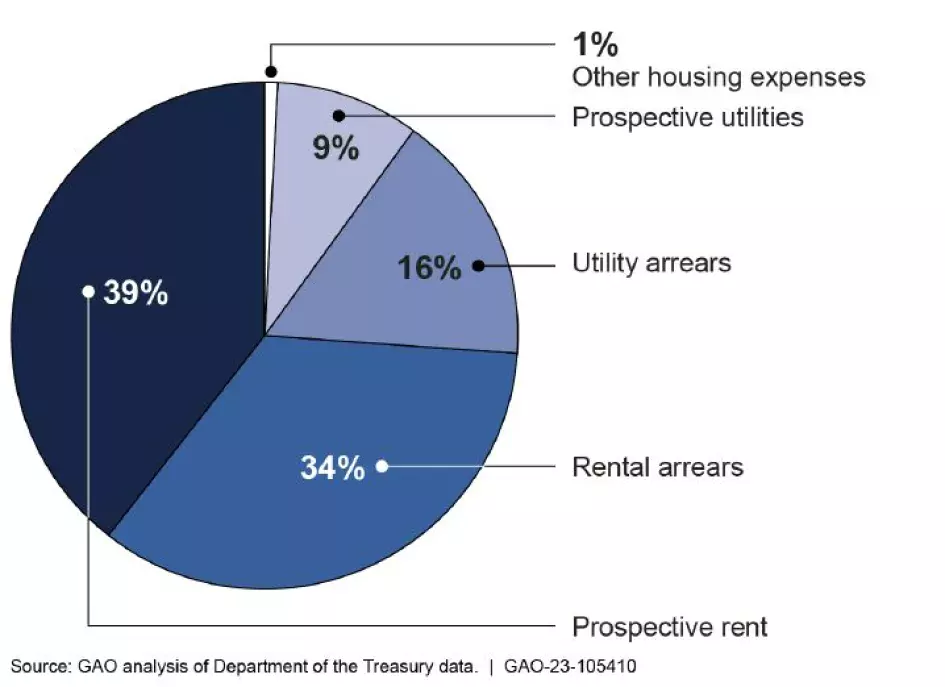Emergency Rental Assistance Helped Prevent Evictions, But Oversight of Payments Was Limited
Congress twice authorized the use of Emergency Rental Assistance, totaling $46.55 billion in aid, to help those impacted by periods of economic instability caused by COVID-19. At its peak, just under 500,000 households a month were receiving this assistance. The two rounds of Emergency Rental Assistance (known as ERA1 and ERA2) helped prevent evictions and housing instability. But there were concerns about weaknesses in the program’s oversight, which may have led to delays and left the program vulnerable to payment errors or overpayment.
Today’s WatchBlog post looks at our recent report about Emergency Rental Assistance.
Image

How was assistance used and who got it?
The Department of Treasury (Treasury) disbursed funds quickly to more than 700 Tribal, state, territorial and local governments (grantees). Grantees then made payments to landlords and utility providers on behalf of renter households. The majority of assistance was used to pay either past due rent (arrears) or future monthly rent payment. But assistance could also be used to pay utilities and other housing expenses, such as security deposits or internet services.
Emergency Rental Assistance Payments by Use, 2021
Image

We do not have a complete picture of who was helped by this assistance because the data collected by Treasury were incomplete or collected inconsistently. But the available data tell us that funding did indeed help renters who were vulnerable to losing their housing during COVID. We estimated that the vast majority (85%) of ERA1 recipients in the fourth quarter of 2021 (October through December) had incomes below 50% of their areas’ median.
Distribution of Emergency Rental Assistance (ERA1), by Income Level
Image

We also found that Emergency Rental Assistance, along with other eviction protections, such as eviction moratoriums, likely helped limit evictions during the pandemic. Data on eviction rates showed that the rate of evictions declined in some locations once Emergency Rental Assistance spending began, even after eviction prohibitions in those locations had expired.
While ramp up was quick, there were delays in using funds
While Treasury was able to allocate funding to grantees quickly, grantees were slow in issuing rental assistance payments on behalf of renters. Grantees had to design their programs and build capacity for processing applications before they were able to screen applicants and make payments. Some grantees told us that initially, they did not have enough staff or technology resources to review applications and administer payments. Grantees also said guidance from Treasury about approving applicants was unclear. Indeed, Treasury officials told us that they had to develop guidance and oversight procedures as payments were beginning to be made.
As a result of delays—and despite the significant need for assistance—nearly one-quarter of grantees had not made any payments 5 months into the program; and 9 months into the program, less than 50% of funding had been used.
Challenges in overseeing payments, preventing fraud
For the last year, we have voiced concern about Treasury’s oversight of the Emergency Rental Assistance program. While the program was implemented quickly to respond to the crisis COVID created, it was left vulnerable to payment errors and potential fraud. For example, if the grantees overpaid or paid ineligible people, Treasury did not have a process to find out or quickly get that money back. In a report issued about a year ago, we recommended that Treasury design and implement processes to ensure timely identification and recovery of grantees’ overpayments. While Treasury agreed with this recommendation, action is still needed.
In our new report, we found that Treasury’s oversight would further benefit from improved data collection and a more detailed assessment of the program’s susceptibility to payment errors, including overpayments, to households. These steps will help improve Treasury’s awareness of risks and its program oversight.
- Comments on GAO’s WatchBlog? Contact blog@gao.gov.
GAO Contacts
Related Products

GAO's mission is to provide Congress with fact-based, nonpartisan information that can help improve federal government performance and ensure accountability for the benefit of the American people. GAO launched its WatchBlog in January, 2014, as part of its continuing effort to reach its audiences—Congress and the American people—where they are currently looking for information.
The blog format allows GAO to provide a little more context about its work than it can offer on its other social media platforms. Posts will tie GAO work to current events and the news; show how GAO’s work is affecting agencies or legislation; highlight reports, testimonies, and issue areas where GAO does work; and provide information about GAO itself, among other things.
Please send any feedback on GAO's WatchBlog to blog@gao.gov.




